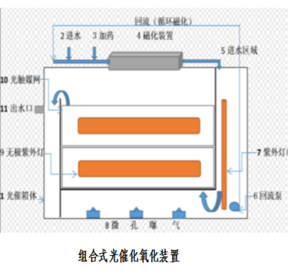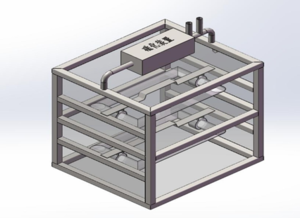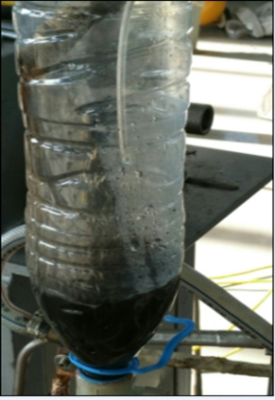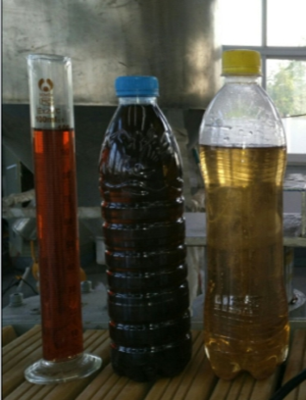|
|
Combined advanced oxidation technology2022-08-28 11:34
Combination of photocatalysis and magnetization technology In aqueous solution, After the photocatalyst catalyst is irradiated by ultraviolet light with a certain wavelength, Highenergy electrons and holes will be generated on the surface of photocatalyst, After a series of reactions, highly active substances (such as superoxide radical · HO2-, hydroxyl radical · OH) will be produced, which will be decomposed from the surface of photocatalyst and enter the solution to redox reaction with solute, and the pollutants will be degraded to form intermediate products to continue the reaction, finally forming stable CO2, H2O and inorganic salts, thus realizing partial degradation of COD, NH3N, etc. According to the "cage effect" of solution and the theory of free radical pairs, the reaction outside the cage is effective. Therefore, how to avoid the recombination of free radicals in the cage and promote the transition of free radicals from singlet state to triplet state is the key to improve the efficiency of free radical chain reaction. After magnetization treatment, the physical and chemical properties of water body change to some extent, such as PH value, viscosity, diffusion coefficient, surface tension and conductivity, which also affect the processes of dissolution, crystallization, polymerization, wetting, coagulation, solidification and precipitation and the metabolic process of biological system. The magnetic field also has obvious memory effect on water system. The external magnetic field changes the physical and chemical properties of sewage, weakens the "cage effect" of solution, which is beneficial to the "cage reaction", reduces the probability of recombination of free radicals, and is also beneficial to the smooth progress of the reaction.
Combination of photocatalysis and oxidant For highconcentration refractory wastewater, The concentration of organic pollutants in wastewater is high and the structure is complex, so the number of strong oxidizing radicals produced by photocatalytic oxidation device is far from enough. Therefore, it is necessary to add oxidants to produce more strong oxidizing radicals to degrade pollutants in wastewater under the dual activation effect of magnetic enhancement and photocatalysis. Application fields of combined advanced oxidation Treatment of highconcentration refractory organic wastewater in chemical and pharmaceutical industries; Treatment of high chroma wastewater in printing and dyeing, dye intermediates and other industries; Landfill leachate treatment; Pretreatment of wastewater from coking, petrochemical industry, rubber additive chemical industry and chemical industry containing benzene ring or advanced treatment of effluent after biochemical treatment. Dye intermediate wastewater and its treatment
|




